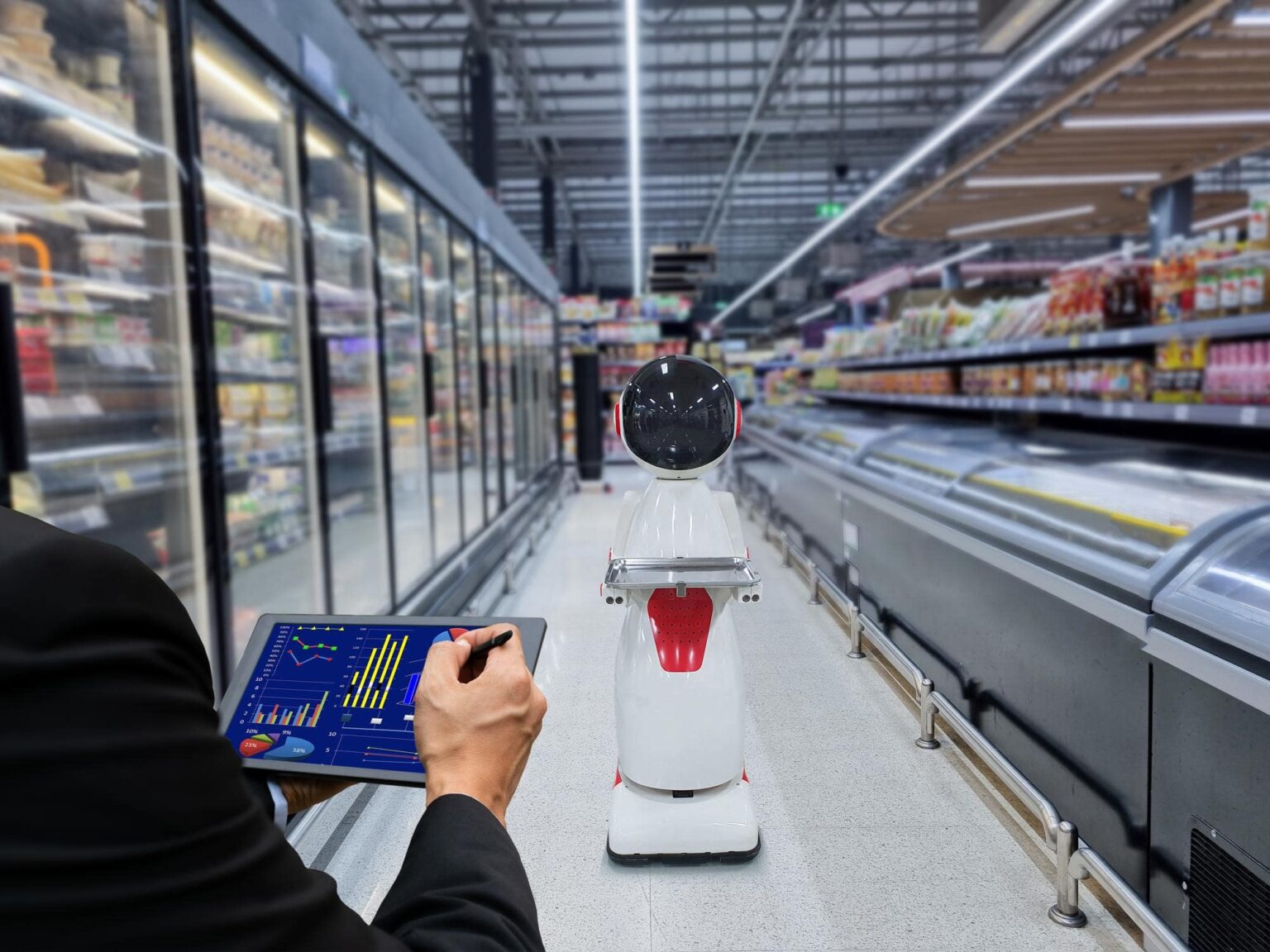Robotics and automation technologies are transforming the retail industry by optimizing inventory management and fulfillment processes. Here’s how robotics and automation enhance retail operations:
- Inventory Management: Robots can automate inventory tracking and management tasks. They can autonomously scan shelves to monitor stock levels, identify out-of-stock items, and generate replenishment orders. This streamlines the inventory management process, reduces manual labor, and ensures accurate and timely inventory updates. Robots can also help with inventory auditing and cycle counting, improving inventory accuracy and reducing discrepancies.
- Warehouse Automation: Automated systems, such as conveyor belts, automated guided vehicles (AGVs), and robotic arms, are used to streamline warehouse operations. These technologies automate tasks such as product picking, sorting, packing, and labeling. By reducing manual handling and increasing efficiency, warehouse automation improves order fulfillment speed and accuracy.
- Robotic Order Fulfillment: Robots can automate order picking and packing processes in distribution centers. Autonomous mobile robots (AMRs) can navigate through warehouses, retrieve products from designated locations, and deliver them to packing stations. This reduces human labor, increases order processing speed, and minimizes errors. Robots can also optimize packing processes by selecting the right box size and packaging materials, reducing waste and shipping costs.
- Click-and-Collect Automation: Automation technologies enable efficient click-and-collect services. Customers can place orders online and collect them from designated pickup points or lockers. Automated systems manage the order retrieval process, ensuring that items are ready for pickup when customers arrive. This reduces wait times and provides a convenient and seamless customer experience.
- Robotic Customer Service: Robots can be deployed in retail stores to assist customers. They can provide information about products, answer frequently asked questions, and guide customers to specific store sections. Robots equipped with natural language processing capabilities can communicate with customers and provide personalized recommendations based on their preferences. This enhances the customer experience and improves engagement in physical retail spaces.
- Last-Mile Delivery Automation: Robotics and autonomous vehicles are being used for last-mile delivery. Drones and delivery robots can transport packages from fulfillment centers to customers’ doorsteps. These automated delivery systems offer faster and more flexible delivery options, especially in urban areas with congested traffic. By optimizing the last-mile delivery process, retailers can improve efficiency, reduce costs, and enhance customer satisfaction.
- Self-Checkout and Cashierless Stores: Automated checkout systems, including self-checkout kiosks and cashierless stores, enable customers to scan and pay for their items without the need for cashier assistance. These systems utilize computer vision, sensor technologies, and AI algorithms to track and process purchases. Self-checkout and cashierless stores reduce checkout lines, improve transaction speed, and enhance the overall shopping experience.
While robotics and automation offer numerous benefits, their implementation requires careful planning and consideration. Retailers need to ensure that technologies integrate seamlessly with existing systems, address potential cybersecurity risks, and provide necessary training to employees to work alongside robots and automation systems.
Overall, robotics and automation technologies in retail optimize inventory management, streamline fulfillment processes, and enhance the customer experience. By leveraging these technologies, retailers can improve operational efficiency, reduce costs, and meet the evolving expectations of today’s consumers.



